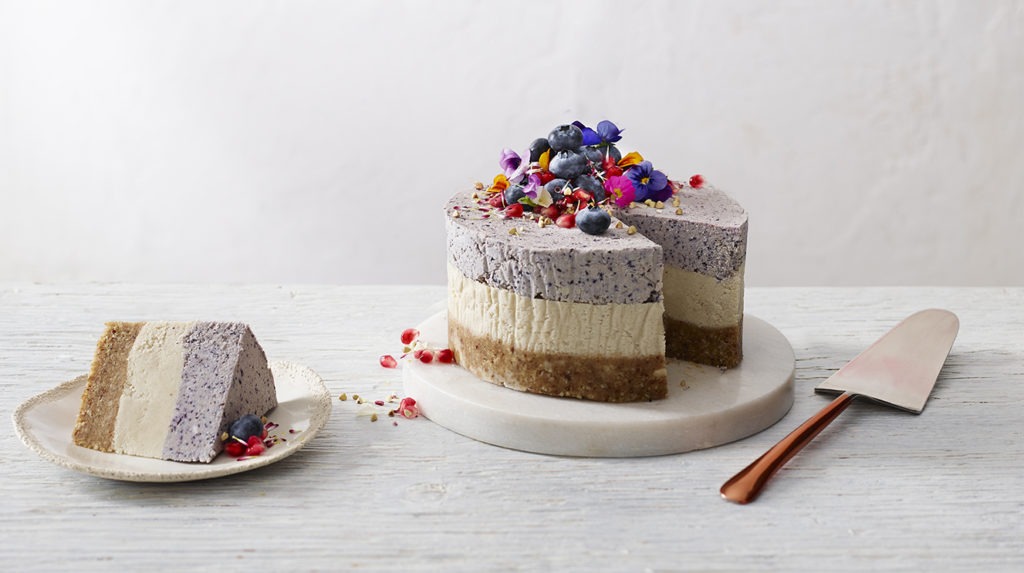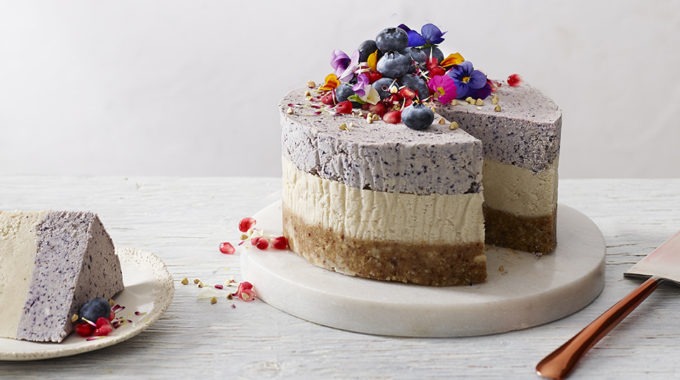Into the blue: sweet blueberry treats
It’s officially peak Australian blueberry season, which typically runs from August until November. So now is the ideal time to put some baby blues into your shopping basket while you’re at your local farmers’ market, greengrocer or supermarket.
In-season blueberries are right up there in the superfood stakes. Just half a cup contains the same amount of antioxidants as two and a quarter cups of broccoli, two and a half cups of spinach or two and a half cups of corn. One type of antioxidant that blueberries contain is anthocyanins. These can help to counter the build-up of arterial plaque and improve cardiovascular health. Blueberries also have neuroprotective effects, which means they help to protect our brains from degeneration, neurotoxicity and oxidative stress. Plus, they’re great for keeping your bones strong, as they contain iron, phosphorous, calcium, magnesium, manganese, zinc and vitamin K. All of these are needed for healthy bones.

Making blueberry magic
While they’re delicious to eat on their own, blueberries are also pretty awesome to cook with. They can be used in both sweet and savoury recipes.
Kate Prezioso of Moondarra Blueberries, a family-run business that has been producing certified organic blueberries in Victoria since 1980, has been eating the fruit all her life, and knows how versatile the blueberry can be in the kitchen, However, one of her favourite ways to cook with them is about as simple as it gets.
“I put them in a saucepan,” she says. “No sugar or anything like that, because I think blueberries are sweet enough as they are. I let them heat up, and they create their own syrup. Make yourself a batch of pancakes, and pour the syrup over the pancakes.”
You can also make a refreshing blueberry slushie by blending a punnet of blueberries with a cup of coconut water. For extra nutrients, throw in a tablespoon of chia seeds, too.
For something a little more decadent, try this raw blueberry and cashew coconut cake recipe, courtesy of Australian Blueberries. There’s no baking required, which makes this the ideal treat to whip up on a hot day before enjoying as a cooling dessert later that evening.

Raw blueberry and cashew coconut cake
Serves 10
You’ll need:
3 cups cashews
¼ cup cashews
1⅔ cup walnuts
¼ cup pecans
1¼ cup pitted dates
5 tbsp coconut oil, melted
¼ cup agave
1 tbsp coconut oil
1⅓ cup fresh certified organic blueberries
½ cup coconut oil, melted
1⅓ cup coconut flour
1½ cup certified organic blueberries
½ lemon’s zest
1 tbsp buckinis (activated buckwheat)
1 tbsp pomegranate seeds
Edible flowers for decorating
Method:
1. Place the 3 cups of cashews into a small bowl and cover with water. In a separate bowl repeat the same step with the quarter cup of cashews. Set aside for 1 hour.
2. For the base, place walnuts and pecans into a food processor, blending for 2 minutes or until fine. Add dates and melted coconut oil, blend again for 30 seconds until incorporated.
3. Place mixture into a 22cm non-stick cake tin. Push the base in firmly with your fingertips and place in the fridge for half an hour to set.
4. For the white layer, pour the 3 cups of cashews, soaking water, agave and coconut oil into a high-speed blender. Blend for 1 minute or until smooth.
5. Remove cake tin from the fridge and pour in mixture. Place into the freezer for 1 hour.
6. For the purple layer, pour the quarter cup of cashews, soaking water, blueberries, coconut oil and coconut flour into a food processor. Blend for 1 minute or until smooth.
7. Remove pan from the fridge and pour the purple mixture into cake tin.
8. Top with blueberries and lemon zest and place into the freezer for 1 hour.
9. Remove from fridge and decorate with buckinis, pomegranate seeds and edible flowers.
10. Slice and enjoy!
September is Australian Organic Awareness Month, which is all about raising awareness of certified organic products, brands and businesses by educating consumers about why choosing certified organic is so important, and encouraging them to look for organic certification logos on their purchases. To learn more about how you can get involved, visit the Australian Organic Awareness Month website at budorganic.com.au.









